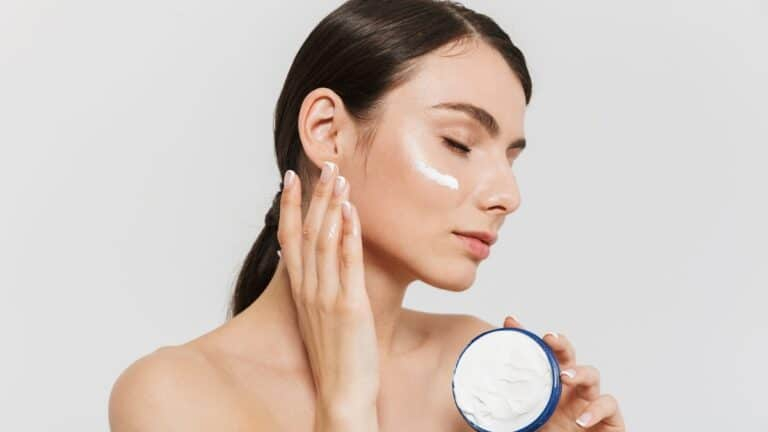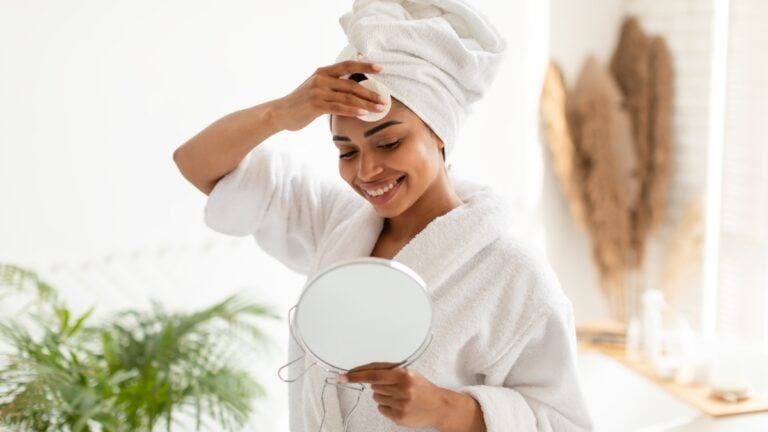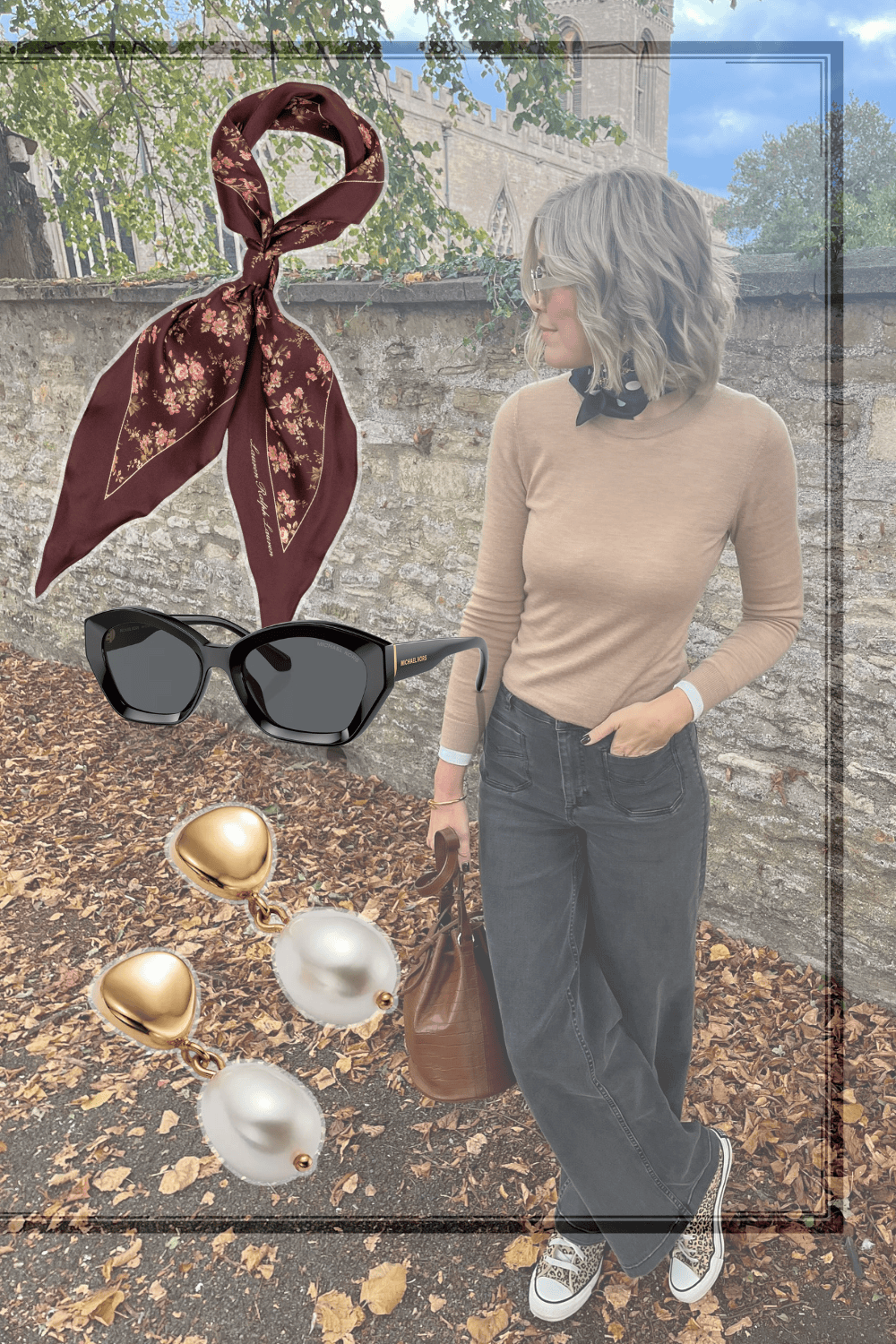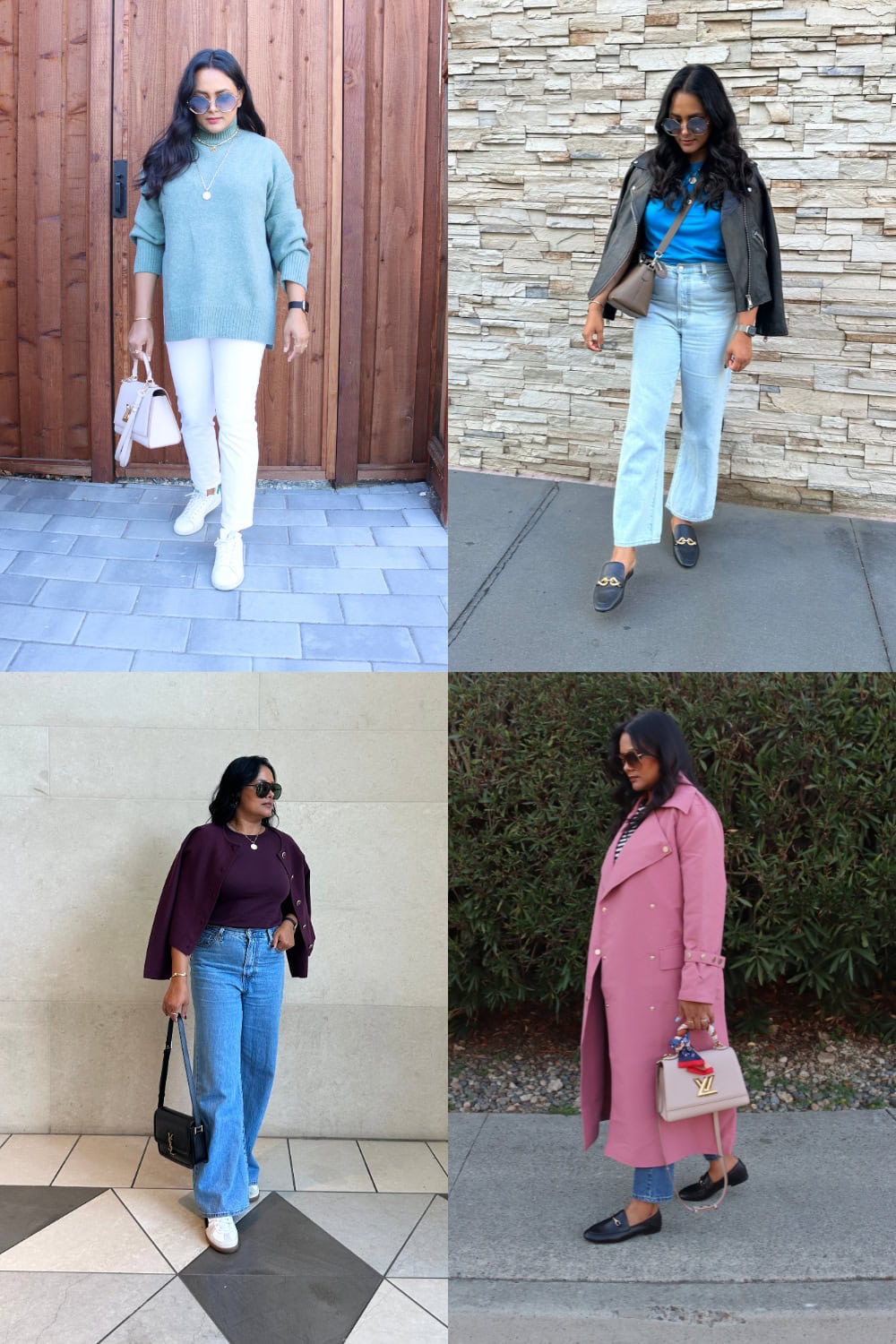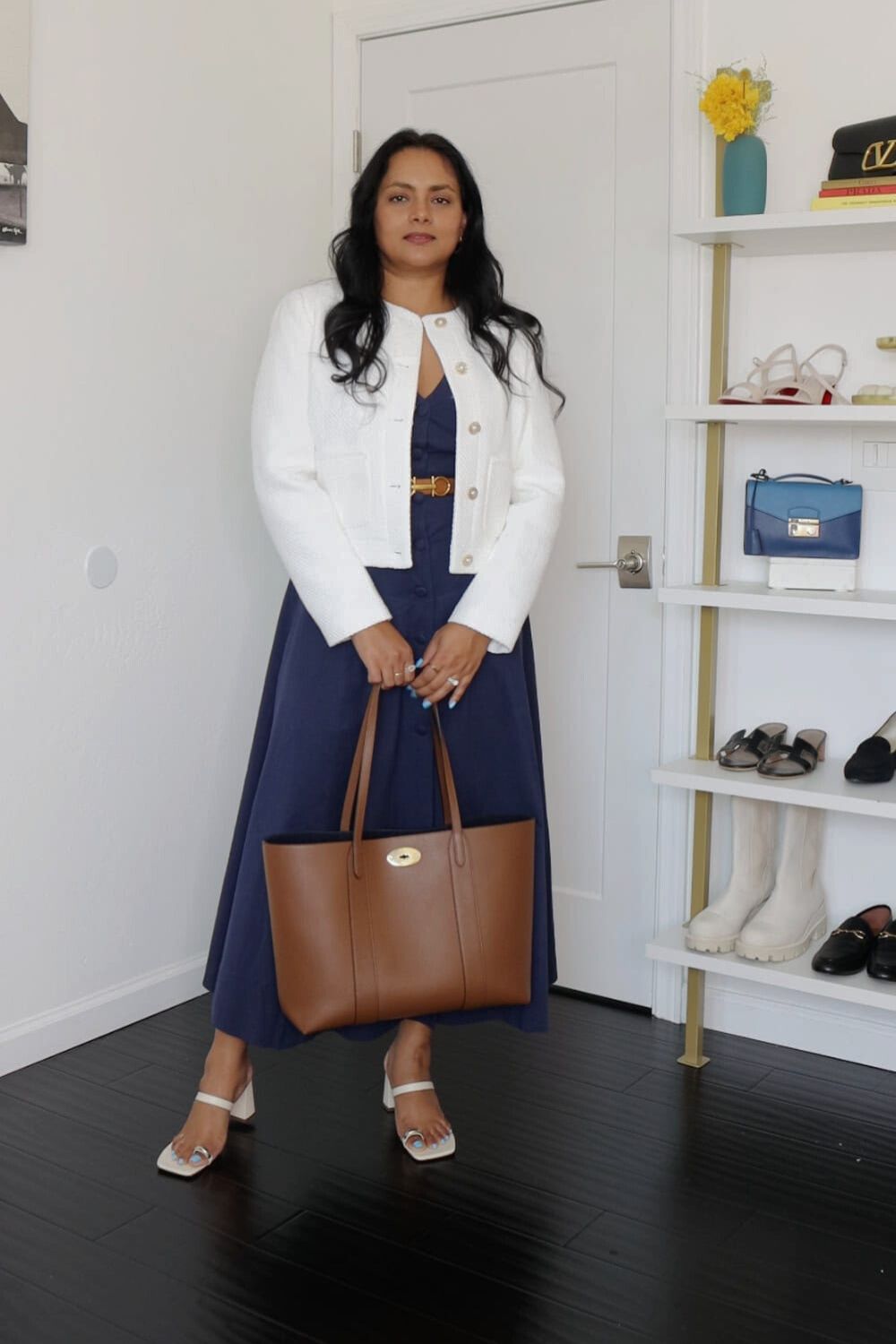This post is a detailed guide of how you can add serums and really upgrade your skincare routine and get the added benefits. I also wanted to ask some common questions I get asked about them. Hopefully by the end of this post, you will feel more confident about using serums and also get clear on some doubts you have been having.
I will also be sharing my exact skincare routine as I get asked that a lot as well. But in this post I want to focus on serums and how you should use them in your skincare routine.

Do I Really Need Serum In Your Skin Care Routine?
To put it in simple words, if you want to get a solution to a skin problem, want to get more glow, want to get rid of dark spots, want more hydration, then moisturizers cannot do it all. If you are ready to apply multiple moisturizers then probably we can achieve all that.
But with growing skin issues with age, pollution, our diet, most moisturizers will be unable to achieve the results you want to. I myself used just moisturizers for years without any real visible changes.
Serums are concentrated version of moisturizers in a liquid format which are easier to absorb and hence can provide faster result than moisturizers. So, if you are looking for a long term solution or visual benefits, then I would recommend adding serums to your skincare routine, but they are not mandatory at all.

When Did I started Using Serums in my Skincare Routine?
This is probably the most asked question and its also fair to ask that. Growing up in the 90s, I probably used the same moisturizer for years and it just felt enough. I usually never had problems with breakouts, so i never really cared for any other cream or trying something more than required. It would be probably cold cream in the winter and regular moisturizers in summer.
As I headed to college in my late teens and early 20s, I incorporated sunscreen into my skincare routine and thought it was enough. I guess it was then, but I never felt like I saw a glow or any change at all. If I did get some breakouts, it would take months for blemish to go away.
In my late 20s, after Saanvi was born, I really started looking into skincare and starting a routine, something I wish I had done earlier because I probably could have avoided some sun blemishes that I started to see. I started incoporating serums after researching about them. And the first serum that I used was the Estee Lauder Advanced Night Repair serum and I still use it every night.
Now, I am using more serums and it definitely feels awesome to see results on my skin.
What is the Right Age to Use Face Serum?
There is no right or wrong age to use serums. There is a reason why it is more popular in 30 year olds and beyond compared to teens and young adults.
Our skin goes through drastic changes after 30 due to hormonal changes, and serums can be used to block any of the side effects which are called aging problems.
But nowadays, there are serums that are not just aging related, you can find serums that are for acne treatment, pigmentation, hydration, color correction, which are also happening to younger men and women. So, if you help with any of those issues, you should absolutely use serums.

Do I Need Both Serum & Moisturizer?
Yes you need both, even though serums can be packed with moisturizing benefits, they don’t visually moisturize your skin. You still need the moisturizer to achieve that. I know it sound confusing, but let me explain this further.
Serums are always in liquid format and they are pretty quickly absorbed by your skin. So after applying serums, you might not feel the moisturized feeling on your skin. You might not feel anything at all on your skin. Moisturizers on the other hand have the oiliness or smooth texture that acts as a barrier on your skin that would protect your skin from any damages from the environment.
What Comes First, Serum or Moisturizer?
You should always apply serum first and seal it with a moisturizer. This is one rule that I have been following for years and it always works. Serums are concentrates that are used to be absorbed on your skin quickly, so applying that on a clean skin so that it will be absorbed quickly is the best way of application.
After that you can seal your skin with a layer of moisture with the moisturizer so that your skin does not feel tight and it has that added layer of protection.

How Quickly Does Serum Work?
Now, there is no scientific evidence to this, or you can’t really say the exact timeframe when you start seeing the benefit, but I do feel that in a few months you would see a noticeable change when you start using it.
I was struggling with huge pores for quite some time till I started using Good Molecules Niacinamide serum. I applied it for 3 months before I started noticing a change. If you are using a serum for hydration, you might notice a difference earlier. It all depends on how quickly your skin reacts to the product.
A common myth that everyone thinks is if they pour more serum, they will see faster result, and I don;t believe that at all. You should only use as much serum as your skin needs which is usually a few drops. Anything excess will just as an external layer and not really do anything.
Can I Mix Serums With Moisturizer?
Now, I don’t see any issue with that, but as I mentioned earlier, the benefit of serums are enhanced if you apply them before moisturizer.
Your pores only have so much real estate, hahaha! A fun way to put it!
If you mix serum with moisturizer, you are just diluting the product and the benefits will be less compared to if you apply it directly on your skin. I think you get what I am saying.
There are ofcourse different types of serums which are meant to be applied by mixing with other products. You can absolutely do that with those kinds of serum. Or, if you are just looking to dilute your moisturizer and you need more hydration, so using a hyaluronic acid serum and mixing with moisturizer will also work.
But if you are looking for pigmentation remedy, or fine lines solution, then please don’t do that. Apply the serum first and then apply your moisturizer.

Can I Use 2 or More Serums at Once?
Yes, absolutely, as long as you are not using them after moisturizer, you should be absolutely fine with using more than 1 serum at once. Most serums specialize in 1 particular benefit which is the sole purpose of serums, so if you need more, you should apply more than one serum in your skincare routine.
I usually use 3 serums each for day and night. I know! As I am getting older, I really value serums way more than moisturizers. My Day and Night time moisturizers have stayed pretty much the same for years, its the serums that have changed, and I honestly am so grateful to have found them.
A common mistake that everyone does though is that they apply way too much serum. This is specially important if you are using more than one. You need to be able to let the serum be absorbed by your skin. I always make sure, that I am using just 1 drop and not more than that. Otherwise it creates an extra layer on your skin and your moisturizer might render useless.

Where Does Serum Go In the Skin Care Routine?
This is actually the most important factor and should be paid attention to in order to get the most benefit from the product.
I want to just list down the steps here, but I am also coming up with a blog post where I will sharing my daytime and nighttime skincare routine.
- Clean Your Face – you should always apply serum on clean face so that your skin can absorb it the quickest and there are no pollutants affecting the composition of serums. Do not apply the serum on wet skin, usually this will dilute the product and sometimes not even get absorbed as water is the fastest to be absorbed. So pat your lightly run your skin to dry it with a towel.
- Use Your Toner – This is optional, but if you are already using a toner, then please apply that before the serum. Let it dry for probably 30 seconds.
- Apply Your Serum – Take a drop of your serum, you can run or dab on your skin. You can continue with your next serum and repeat this step. It does not really matter whether you run or pat the serum. Even though a lot of people tell you to dab it, or put the drop on your skin directly, as long as your hands are clean and dry, you can apply it on your face. Usually, you only use a drop of the serum, so rubbing it on your palm might literally take all that away, so you can put the drop on your skin directly if you like, and use your fingers to apply it everywhere. I usually take a bit more than a drop and rub it on my face and I still see result.
- Apply Your Moisturizer – After you have applied your serum, you should wait a few seconds for it to be absorbed, and then you can continue with your moisturizer. If you use sunscreen, you can also apply that now. And then you are good to apply your makeup.

Can I Sleep With Serum On My Face?
Absolutely, you can. I usually use night repair serums that have more benefits at night when my skin is resting and follow it with night creams that can seal the product and sleep. I have been doing for over 7 years now, and I have seen no problem with it.
Some Benefits that I have noticed Using Serums:

Over the years of using serums, I have noticed a tremendous change in my skin and I wanted to share some of them here to help you understand the power of serums.
Skin Tightness Reduction – Even though I have an oily skin, I always felt skin tightness during cooler season and after washing my face. A lot of people ignore this, but this only means that your skin is dehydrated. After using hyaluronic acid serum from Good Molecules, I have noticed that I no longer feel the skin tightness. It has drastically reduced.
Sun Damage Reduction – I had started noticing pigmentation on my cheekbones because of sun damage, and that is when I started using Estee Lauder night repair serum and thanks to it, I have noticed that the pigmentation have reduced quite a bit.
Pore size reduction – I had already mentioned this, but thanks to Good Molecules Niacinamide serum, my pores have reduced which in turn have helped my skin to not get as oily as it gets. My breakouts have also reduced because of that with the occasional burst due to PMS.



